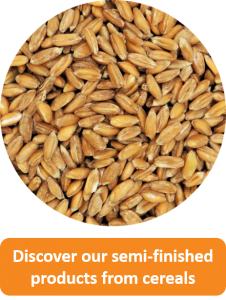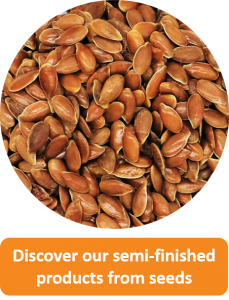Can oxidation and lipase issues in semi-finished products be avoided without using “E” numbers?
Nutritional and functional characteristics of wholemeal products
In nature, raw materials such as cereals, legumes, special seeds and their derivatives are composed of nutrients such as carbohydrates, proteins, fats and fibre. Nutritional components, such as vitamins, minerals, emulsifiers, enzymes, antioxidants and aromatic substances are mainly concentrated in the fatty part and in the bran. The whole seed contains all of these qualities.

The usage of these kinds of semi-finished products forces companies to pay close attention to the stability of the mixes formulated for the production of finished foods, in order to not run into shelf life issues linked mainly to the denaturation of the fatty part.
Oxidation, the number 1 enemy
The fatty part, besides being the most qualified in terms of nutrients and nutritional components, is also the most difficult to preserve and stabilize. In fact, it is extremely sensitive to temperature, light and air.
Prolonged exposure to these agents activates primary oxidative phenomena and the precursors of molecules such as aldehydes and hexanals, which are responsible for organoleptic changes affecting lipids, generating rancidity, bad smells, and a decrease in shelf life.
Lipase, the number 2 enemy
Among the many enzymes present in the seeds, some cause the lowering of the nutritional and sensorial qualities of finished foods.
In the lipid part, the lipolytic activity of the lipase is very problematic, as it causes the hydrolysis of the triglycerides into glycerol and fatty acids, with an increase in acidity and making the fatty part more susceptible to the above mentioned rancidity phenomena.
Can oxidative phenomena be prevented? Yes!
 These negative effects deriving from the use of oxidation-sensitive raw materials can be prevented through the use of chemical additives and preservatives. This however implies their indication on the label with “E” numbers.
These negative effects deriving from the use of oxidation-sensitive raw materials can be prevented through the use of chemical additives and preservatives. This however implies their indication on the label with “E” numbers.
CerealVeneta offers semi-finished products with natural characteristics suitable for the production of finished foods stable over time.
The technologies applied to the raw materials, in fact, allow to maintain organoleptic and healthy qualities in semi-finished products, avoiding the oxidation of the fatty part. It is possible to ensure and standardize particularly low values of peroxides, such as to guarantee the qualitative stability of the finished product through research and the company’s processes, collaboration with the customer and analytical verification of the results.
Can lipase activity be avoided? Yes!
The presence of lipase activity can be contained or eliminated by applying innovative technologies with heat treatment systems, specific for each raw material.
CerealVeneta has equipped itself with processes suitable for the stabilization of the lipase component, managing to offer semi-finished lipase free or with values that can be agreed on with the customer.
Using a cold supply chain
 CerealVeneta pays attention to storage and preservation methods of its raw materials and semi-finished products, since these can have a strong impact on the oxidative and microbiological stability of the products, especially in wholemeal products (and their derivatives).
CerealVeneta pays attention to storage and preservation methods of its raw materials and semi-finished products, since these can have a strong impact on the oxidative and microbiological stability of the products, especially in wholemeal products (and their derivatives).
Maintaining a cold supply chain and the use of a warehouse with controlled temperatures and humidity allows to maximize shelf life and maintain its nutritional properties and health benefits, especially close to and during the summer months.
This is why CerealVeneta stores its semi-finished products at controlled temperatures and humidity, and can apply vacuum-packaging to those products in which the nature of the acidic component of fats presents a strong instability linked to the presence of oxygen.
CerealVeneta qualifies and quantifies the peroxide content and lipase activity in its semi-finished products derived from the species and varieties of seeds used in its processes through the technological use of heat-treatment and cryo-milling.